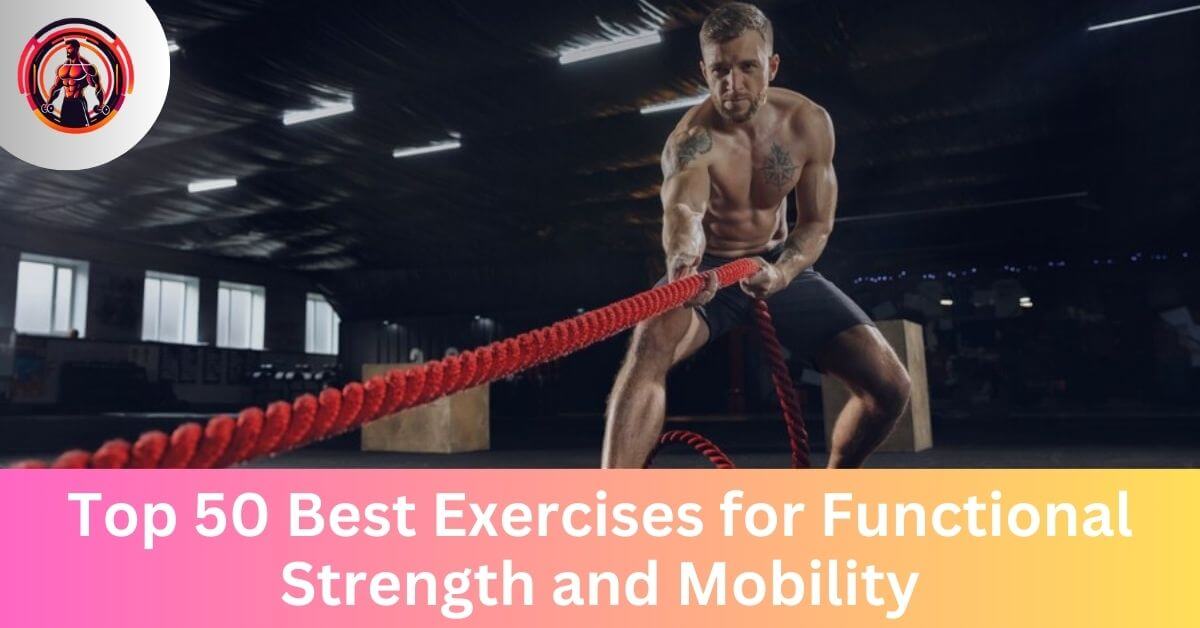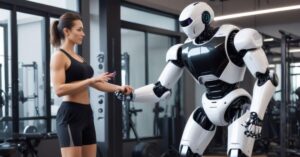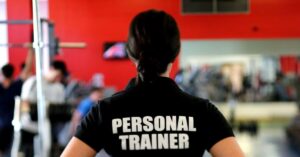| What studies say? Gradual resistance strength training increases muscle strength in older persons, even the very elderly. |
We’re living in a world where sitting feels like our default mode, but let’s face it—being able to lift, bend, and move without groaning is pretty darn important. That’s where functional strength and mobility swoop in like your personal superheroes.
The value of functional strength and mobility cannot be emphasized in the modern world where sedentary lifestyles are the norm.
Functional strength is the capacity to carry out daily activities quickly and effectively, whereas mobility is the ease and freedom of movement. Both are essential elements of general health and fitness, as they aid in injury prevention, posture correction, and quality of life enhancement.
Let’s go through the top 50 functional strength and mobility exercises. By focusing on different muscle groups and movement patterns, these exercises offer a well-rounded method for enhancing both strength and flexibility.
List of 50 Best Exercises for Functional Strength and Mobility
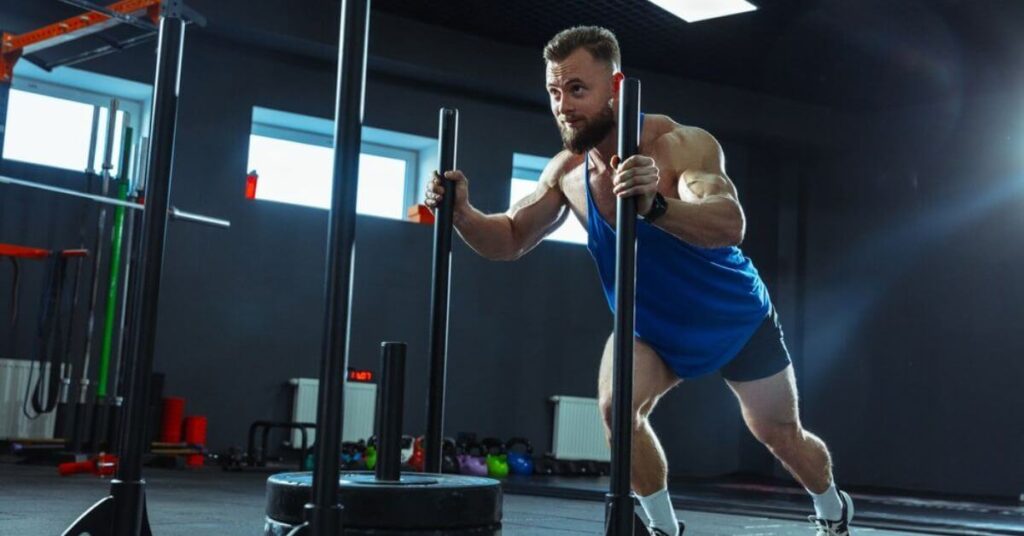
1. Squats
Squats are one of the most fundamental exercises for building lower body strength and improving mobility in the hips, knees, and ankles. Focus on maintaining proper form, keeping your chest up and your knees tracking over your toes.
2. Deadlifts
Deadlifts work multiple muscle groups, including the glutes, hamstrings, and lower back. They also help improve hip hinge mechanics, which are essential for functional movement patterns like bending and lifting.
3. Lunges
Lunges are excellent for targeting the muscles of the lower body while also improving balance and coordination. Variations such as reverse lunges, walking lunges, and lateral lunges can add variety to your routine.
4. Push-Ups
Classic push-ups are killer for building up our upper body strength, especially in our chest, shoulders, and triceps. And don’t forget, they’re also engaging our core muscles for stability.
5. Pull-Ups
Pull-ups are the real deal for beefing up our upper back muscles like the latissimus dorsi and rhomboids. If you’re not quite there yet, no worries – start with assisted variations or inverted rows.
6. Planks
Planks might seem simple, but they’re seriously effective for firing up our core muscles, including those abs, obliques, and lower back. Just keep that spine neutral and our core engaged.
7. Russian Twists
Time to twist it out with Russian twists! These babies are killer for building rotational strength and stability in our core, not to mention hitting those obliques and hip flexors.
8. Bridges
Bridges are our ticket to a stronger posterior chain, hitting those glutes, hammies, and lower back muscles. Plus, they’ll have us nailing that hip extension for movements like running and jumping.
9. Plank Shoulder Taps
Take your plank game up a notch with plank shoulder taps. They’ll have our shoulders, triceps, and core muscles working overtime while also improving stability and coordination.
10. Bicycle Crunches
Get ready to pedal your way to killer abs with bicycle crunches. They’re dynamite for targeting those abs and obliques while also giving our hip flexors a run for their money.
READ MORE: List of 10 Best AI Workout Generator Apps
11. Kettlebell Swings
Kettlebell swings are a dynamic exercise that targets the posterior chain, including the glutes, hamstrings, and lower back. They also improve explosive power and cardiovascular endurance.
12. Turkish Get-Ups
You’ll find Turkish get-ups to be a complex full-body exercise that really enhances mobility, stability, and strength. It requires a lot of coordination and control as you move through each stage of the movement.
13. Single-Leg Romanian Deadlifts
When you do single-leg Romanian deadlifts, you’ll notice they’re a great unilateral exercise that really hones in on your hamstrings, glutes, and lower back. You’ll also feel they help you improve your balance and proprioception.
14. Box Jumps
Box jumps are a fantastic plyometric exercise that really amps up your explosive power and strengthens your lower body. You can start with a low box height and gradually increase it as you get better.
15. Medicine Ball Slams
You’ll love doing medicine ball slams because they’re such a dynamic full-body exercise. They really boost your power, strength, and coordination, and they’re also a great way for you to release stress and tension.
16. Step-Ups
Step-ups are one of your favorite unilateral exercises. They really target your lower body muscles, especially the quadriceps, hamstrings, and glutes. Plus, they’re excellent for improving your balance and stability.
17. Renegade Rows
When you tackle renegade rows, you know you’re in for a challenge. They really work your back, shoulders, and core muscles, and you can feel your coordination and proprioception improving with each rep.
18. Bear Crawls
You’ll find bear crawls to be a functional exercise that improves coordination, strength, and mobility in your shoulders, core, and hips. They also provide with a great cardiovascular workout.
19. Farmers Walk
Farmers walks are a simple yet effective exercise for improving your grip strength, core stability, and overall muscular endurance. You’ll be walking while holding heavy weights in each hand.
20. Dumbbell Presses
When you do dumbbell presses, you’re engaging in a compound exercise that targets your chest, shoulders, and triceps. Your core muscles will also engage for stability and support.
21. Band Pull-Aparts
Band pull-apart are a great exercise for targeting the muscles of your upper back and shoulders, including the rear deltoids and rhomboids. They’ll also help you improve your posture and shoulder mobility.
22. Lateral Band Walks
Lateral band walks are a fantastic exercise for targeting the muscles of your hips and outer thighs, including the gluteus medius. They’ll also help improve your hip stability and reduce the risk of injury.
23. Cossack Squats
Cossack squats are a dynamic exercise that improves mobility and strength in your hips, groin, and inner thighs. They’ll also help you improve your balance and coordination.”
24. Roman Chair Leg Raises
You’ll find that Roman chair leg raises are an excellent exercise for targeting your lower abdominal muscles. They also engage your hip flexors and improve your core stability.
25. Hanging Leg Raises
Hanging leg raises can be quite challenging, but they’re great for targeting your lower abdominal muscles and hip flexors. Additionally, they’ll help improve your grip strength and shoulder stability.
26. Inverted Rows
When you perform inverted rows, you’ll be engaging in a great bodyweight exercise that targets your upper back and arms. Your core muscles will also engage to provide stability and support.
27. Tricep Dips
Tricep dips are effective for targeting the muscles of your upper body, including your triceps, chest, and shoulders. They’ll also engage your core muscles to provide stability.
28. Reverse Hyperextensions
Reverse hyperextensions are fantastic for targeting your lower back, glutes, and hamstrings. They’ll also help improve your hip extension and reduce the risk of lower back pain.
29. Front Squats
Front squats are a variation of the traditional squat that places more emphasis on your quadriceps and core muscles. They’re also great for improving mobility and stability in your shoulders and upper back.
30. Overhead Presses
When you perform overhead presses, you’ll be engaging in a compound exercise that targets your shoulders, triceps, and upper back. Your core muscles will also engage for stability and support.
31. Walking Lunges with Twist
Walking lunges with a twist is a dynamic exercise that targets your lower body and core muscles. They’re great for improving balance, coordination, and hip mobility.
32. Bulgarian Split Squats
When you perform Bulgarian split squats, you’re engaging in a unilateral exercise that targets the muscles of your lower body, including your quadriceps, hamstrings, and glutes. You’ll also notice improvements in your balance and stability.
33. Hollow Body Hold
Hollow body holds can be quite challenging, but they’re excellent for targeting your core muscles, including your abdominals, hip flexors, and lower back. They’ll also help you enhance your body awareness and proprioception.
34. Supermans
Supermans are a simple yet effective exercise for targeting your lower back, glutes, and shoulders. They’ll also aid in improving your posture and spinal alignment.
35. Scapular Retraction
Scapular retractions are great for targeting the muscles of your upper back and shoulders, such as the rhomboids and rear deltoids. They’ll also help you improve your posture and shoulder stability.
36. Cable Woodchops
When you perform cable woodchops, you’re engaging in a dynamic exercise that targets your core muscles, shoulders, and obliques. They’re excellent for enhancing your rotational strength and stability.
37. Lateral Raises
Lateral raises are an isolation exercise that targets your shoulder muscles, particularly the lateral deltoids. They’ll also contribute to improving your shoulder stability and reducing the risk of injury.
38. Hamstring Curls
Hamstring curls target your hamstring muscles and are beneficial for improving knee flexion and reducing the risk of hamstring injuries.
39. Hip Thrusts
Hip thrusts are fantastic for targeting your glutes and hamstrings. They’ll also help improve your hip extension and reduce the risk of lower back pain.
40. Side Planks
Side planks are effective for targeting your core and hip muscles, including the obliques and gluteus medius. They’ll also enhance your lateral stability and balance.
41. Cable Rows
Cable rows are an effective exercise for targeting the muscles of your upper back and arms. They’ll also contribute to improving your posture and shoulder stability.
42. Romanian Deadlifts
When you perform Romanian deadlifts, you engage in a variation of the traditional deadlift that targets your lower back, hamstrings, and glutes. You’ll also notice improvements in your hip hinge mechanics, which can help reduce the risk of lower back pain.
43. Lying Leg Raises
Lying leg raises are excellent for targeting your lower abdominal muscles and hip flexors. They also contribute to improving your core stability, which can help reduce the risk of lower back pain.
44. Russian Twists with Medicine Ball
Russian twists with a medicine ball provide a dynamic core exercise targeting your abdominals, obliques, and hip flexors. This exercise also helps enhance your rotational strength and stability.
45. Standing Calf Raises
Standing calf raises are an isolation exercise specifically targeting your calf muscles. Engaging in this exercise can improve ankle mobility and reduce the risk of ankle injuries.
46. Front Planks with Leg Lifts
Front planks with leg lifts offer a challenging core workout that targets your abdominals, hip flexors, and lower back. Incorporating this exercise into your routine can enhance overall core stability and balance.
47. Reverse Lunges with Bicep Curls
When you perform reverse lunges with bicep curls, you engage in a dynamic exercise targeting the muscles of your lower body and arms. This exercise not only improves your balance and coordination but also strengthens your upper body.
48. Burpees
Burpees are a full-body exercise targeting multiple muscle groups, including your chest, shoulders, arms, core, and legs. Incorporating burpees into your routine can help improve your cardiovascular endurance and explosiveness.
49. Pistol Squats
Pistol squats are a challenging unilateral exercise targeting the muscles of your lower body, including your quadriceps, hamstrings, and glutes. They’re great for enhancing your balance, coordination, and lower body strength.
50. Wall Sits
Wall sits are a static exercise targeting the muscles of your lower body, including your quadriceps, hamstrings, and glutes. Engaging in wall sits helps improve your muscular endurance and mental toughness.
Summary
Here is the summary of the blog titled “The 50 Best Exercises for Functional Strength and Mobility“
- Squats
- Deadlifts
- Lunges
- Push-Ups
- Pull-Ups
- Planks
- Russian Twists
- Bridges
- Plank Shoulder Taps
- Bicycle Crunches
- Kettlebell Swings
- Turkish Get-Ups
- Single-Leg Romanian Deadlifts
- Box Jumps
- Medicine Ball Slams
- Step-Ups
- Renegade Rows
- Bear Crawls
- Farmers Walk
- Dumbbell Presses
- Band Pull-Aparts
- Lateral Band Walks
- Cossack Squats
- Roman Chair Leg Raises
- Hanging Leg Raises
- Inverted Rows
- Tricep Dips
- Reverse Hyperextensions
- Front Squats
- Overhead Presses
- Walking Lunges with Twist
- Bulgarian Split Squats
- Hollow Body Hold
- Supermans
- Scapular Retraction
- Cable Woodchops
- Lateral Raises
- Hamstring Curls
- Hip Thrusts
- Side Planks
- Cable Rows
- Romanian Deadlifts
- Lying Leg Raises
- Russian Twists with Medicine Ball
- Standing Calf Raises
- Front Planks with Leg Lifts
- Reverse Lunges with Bicep Curls
- Burpees
- Pistol Squats
- Wall Sits
Conclusion
You can increase your functional strength and mobility by including these 50 exercises in your workout regimen. This will improve your performance in daily tasks and lower your risk of injury.
Always start off cautiously, and as you gain proficiency, progressively up the intensity and intricacy of your routines.
Moreover, pay attention to your body’s signals and adjust as necessary to maintain good form and avoid overdoing it. You can attain your fitness objectives and lead a more active, healthy lifestyle with commitment and perseverance.
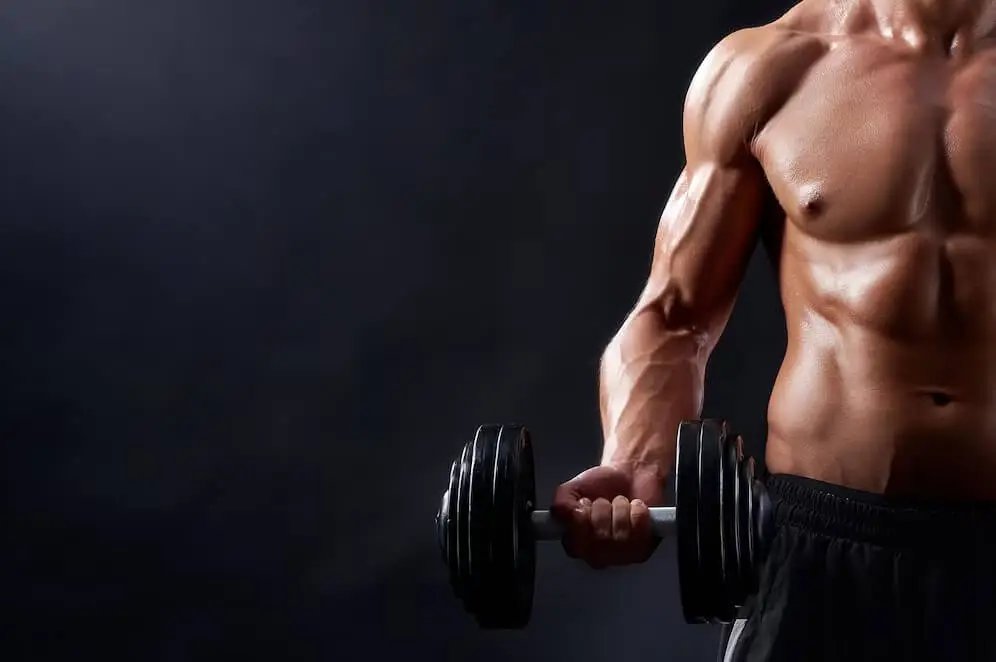
Looking for your Own Personal Trainer?
FAQs
1. What is functional strength, and why is it important?
Ans. Functional strength refers to the ability to perform everyday tasks efficiently and effectively, utilizing various muscle groups and movement patterns. It emphasizes movements that mimic real-life activities, such as bending, lifting, and carrying objects. Functional strength is crucial for maintaining independence, preventing injuries, and improving overall quality of life as we age.
2. How can I improve my mobility?
Ans. Improving mobility involves enhancing the range of motion in your joints and muscles, allowing for greater flexibility and ease of movement. Incorporating dynamic stretches, foam rolling, and mobility exercises into your routine can help loosen tight muscles, improve joint mobility, and correct imbalances. Yoga, Pilates, and regular stretching sessions can also contribute to enhanced mobility over time.
3. How often should I incorporate strength training into my routine?
Ans. The frequency of strength training sessions depends on your fitness goals, current level of fitness, and other factors such as age and recovery ability. As a general guideline, aim to strength train 2-3 times per week, with at least one day of rest between sessions to allow for muscle recovery and adaptation. It’s essential to listen to your body and adjust your training frequency as needed to prevent overtraining and promote optimal progress.
4. Can functional strength and mobility training help with injury prevention?
Ans. Yes, functional strength and mobility training can be highly beneficial for injury prevention. By improving overall strength, flexibility, and movement patterns, you can reduce the risk of common injuries associated with daily activities, sports, and exercise. Additionally, focusing on proper form and technique during exercises can help correct imbalances and prevent overuse injuries. Consistent training that targets functional movement patterns can help you move more efficiently and safely in all aspects of life.
5. I have limited time for workouts. Which exercises should I prioritize for maximum benefits?
If you’re short on time, prioritize compound exercises that work for multiple muscle groups simultaneously, such as squats, deadlifts, push-ups, and pull-ups. These exercises provide efficient full-body workouts, improving strength, mobility, and coordination in a shorter amount of time. Also, focus on exercises that target your specific areas of weakness or tightness to address imbalances and prevent injury.
6. How can I progress with my functional strength and mobility training as I become more advanced?
As you progress with your training, you can increase the intensity, complexity, and resistance of your exercises to continue challenging your body and promoting further improvements. Incorporate variations of exercises, increase weight or resistance, add plyometric movements, and incorporate unstable surfaces or equipment like balance boards or resistance bands. In addition, consider working with a qualified personal trainer who can create a customized program tailored to your goals and provide guidance on proper technique and progression.

